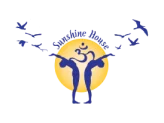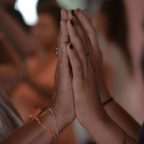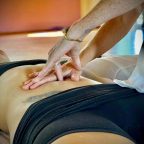Mapping the Emotional Body
Every part of the body has a function, which has a meaning for the emotional self. Although that meaning is partially defined by our belief system, the whole of humanity usually suffers more or less from the same issues, and more or less seeks the same things in terms of enjoyment of life. The more an energetic charge manifests itself toward the front of the body, the more current the corresponding issue, and the more toward the back of the body, the more ancient the issues–sometimes even pre-birth related, such as family matters passed down through the bloodline. Pre-birth issues have been called past life issues, cultural karma, inner ghosts in many cultures and other matters carried by the collective unconscious.
If we look at the body bilaterally, usually the right side refers to Yang–active, mentally dominant, directive, and logically oriented (even for left-handed people), while the left side usually refers to Yin–corresponding to the affective side of the body, the side of abstraction and emotional orientation. Most of the time, but not consistently, we find male figures on the right and female figures on the left. Even in the West, there is a whole spectrum from Yin to Yang for both men and women, so there can be a wide range of overlap: Some men are more Yin than some women, and some women are more Yang than some men. There are many instances of more matriarchal families where the mother is the provider and decision-maker, and the father is the family’s emotional support. In this case, the father would be manifested on the left side and the mother on the right. There are also instances of single parents in which these aspects are interchangeable.
Every good artist who has drawn the human body knows that the personality of an individual is reflected in every physical aspect. The body is very consistent with a person’s psychological profile and every part of the physical body will possess this undeniable quality. This is called morphology, the science of shapes. Our toes are shaped because they are our toes; to change the shape of one’s toes–we have to first change ourselves.
In light of this understanding, emotional mapping is designed as a guide for you to make your own map for every patient at every treatment. From the very moment we come into contact with another we can start to read their body. Withdrawn? Standing tall? We can also understand their body language when they speak to us–arms folded across the chest? On which hip they sink into? Exaggerated arms movements, shoulders hunched? Face relaxed, eye contact? From all of this language, we can use our perception to understand how a person is feeling and how comfortable they feel within themselves. If our heart is open with no judgments we are able to see and feel all of these invisible messages.
(Part taken and adapted from Gilles Marin)
Learn more about the Emotional Body in this book: Five Elements, Six Conditions: A Taoist Approach to Emotional Healing, Psychology, and Internal Alchemy, by Gilles Marin.






